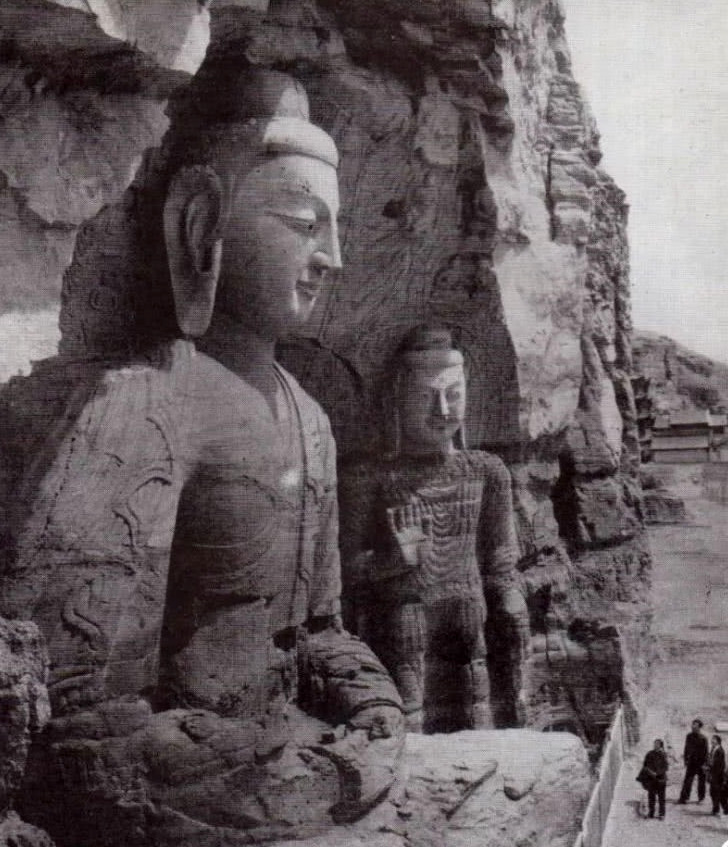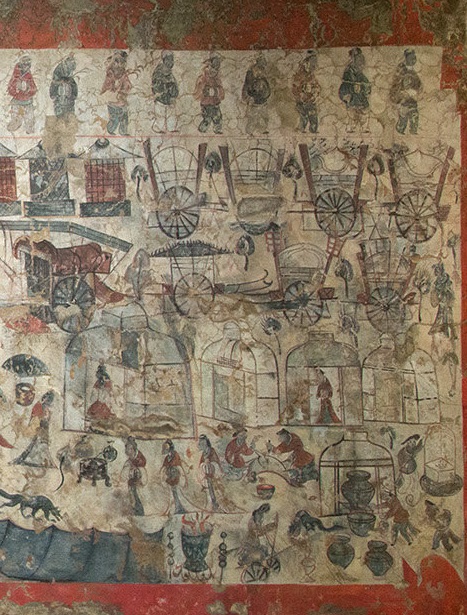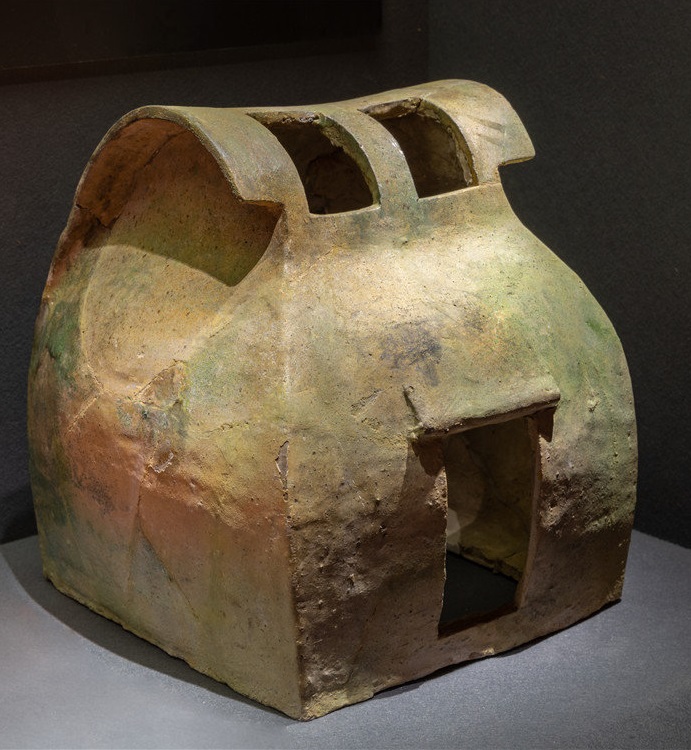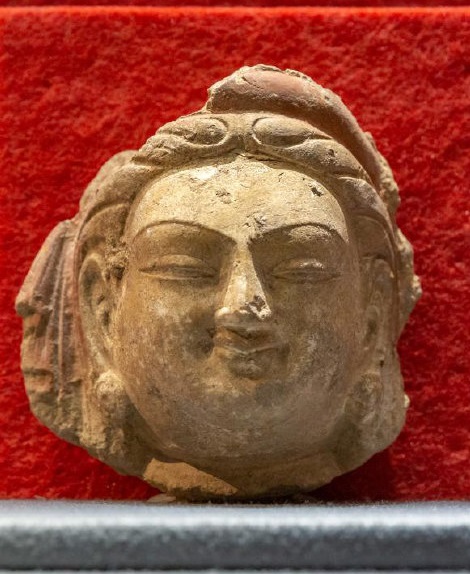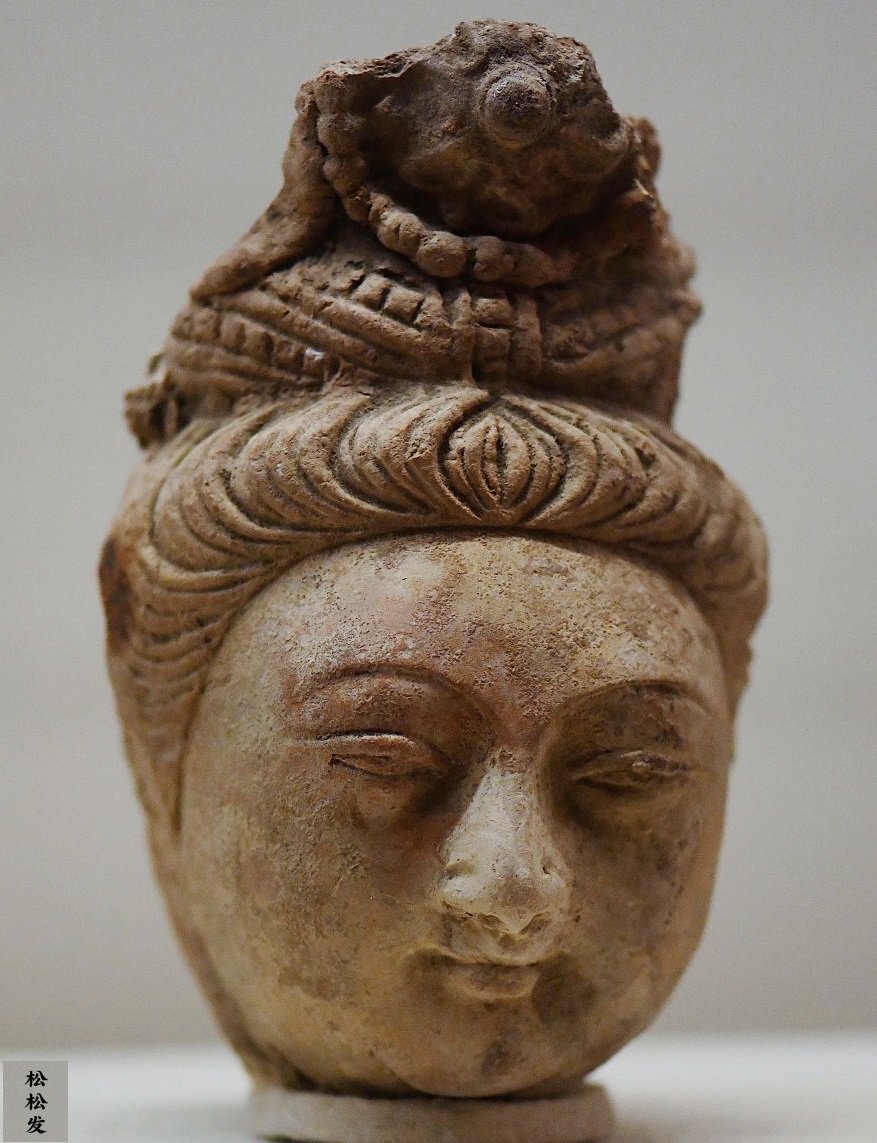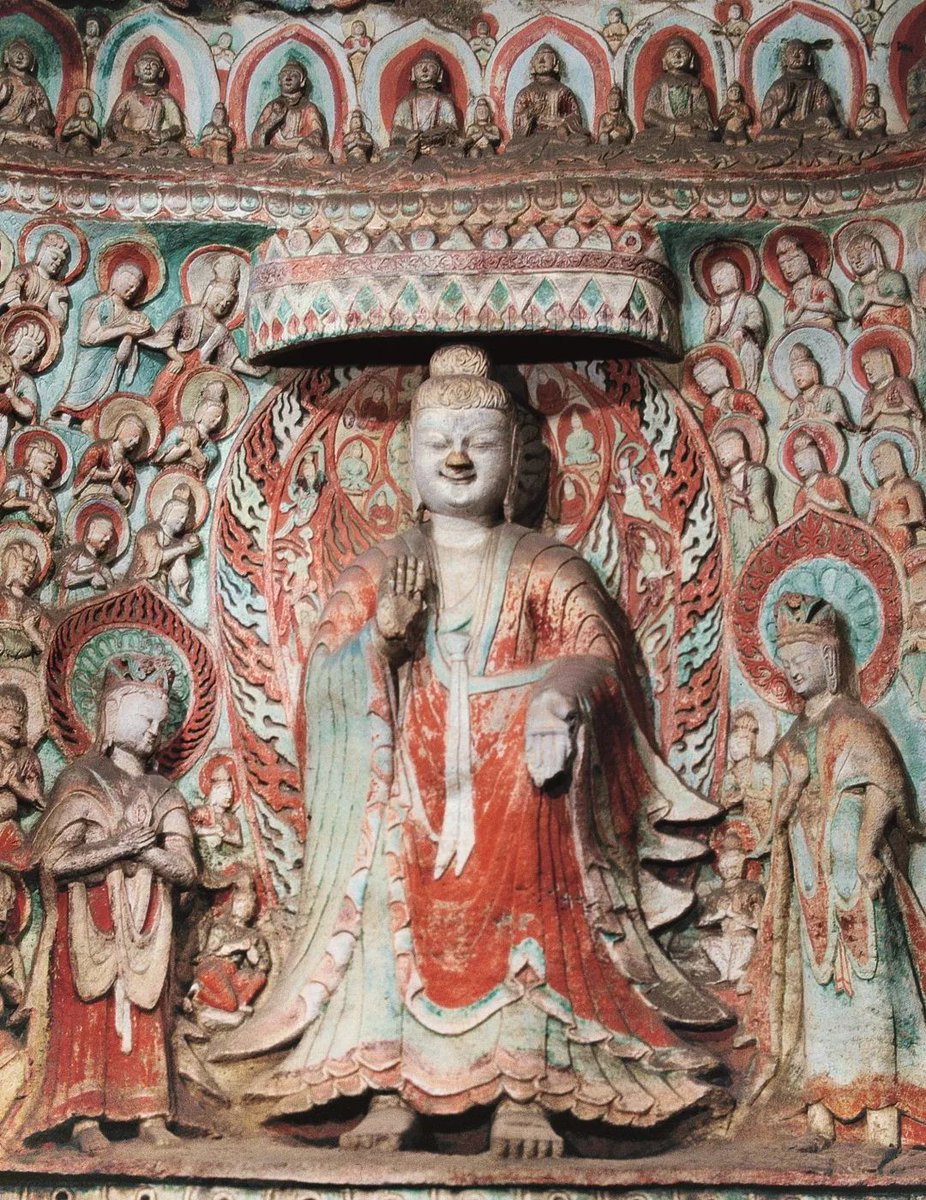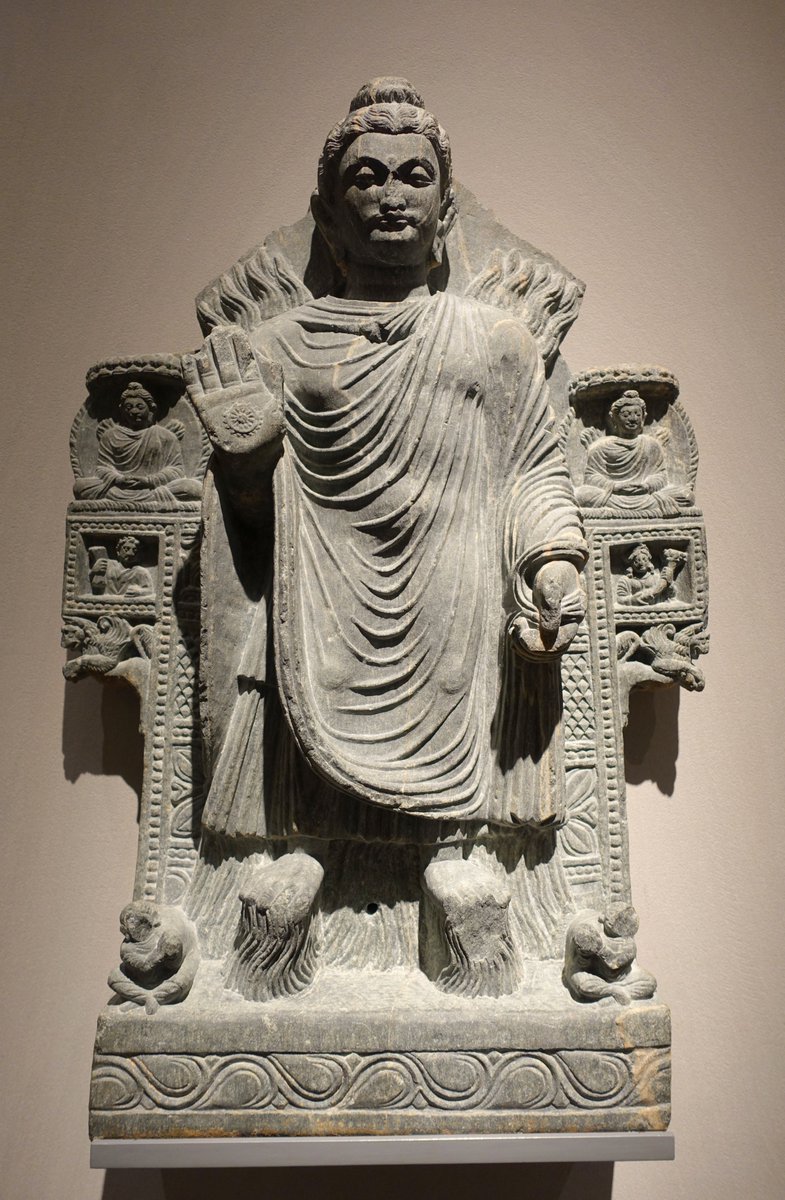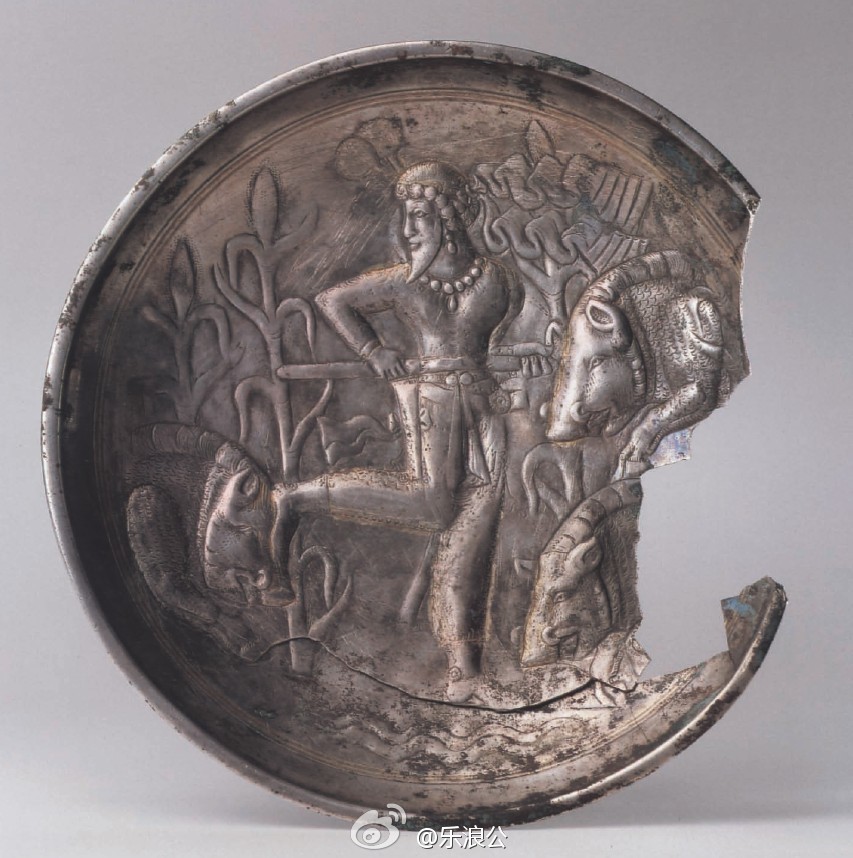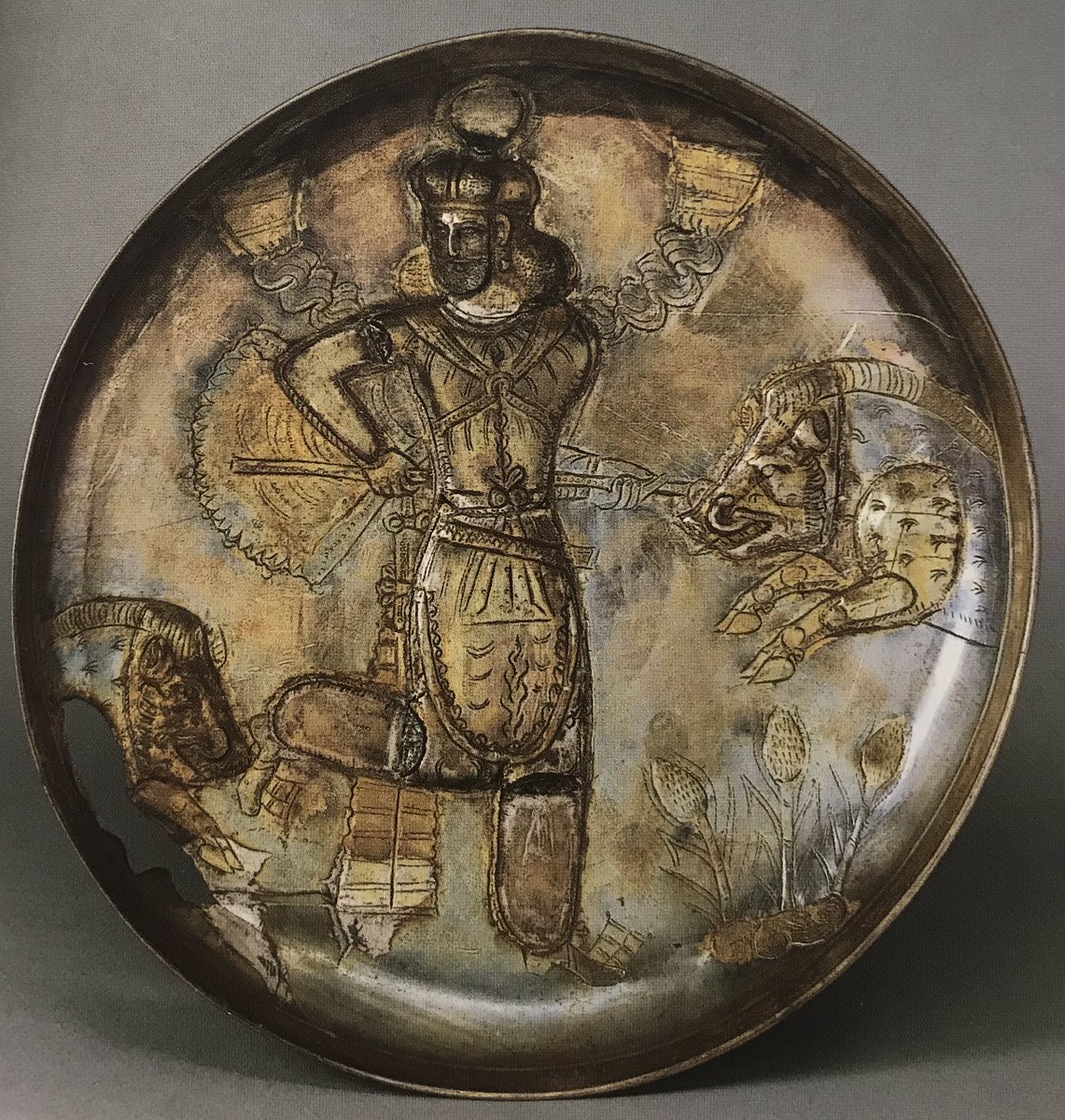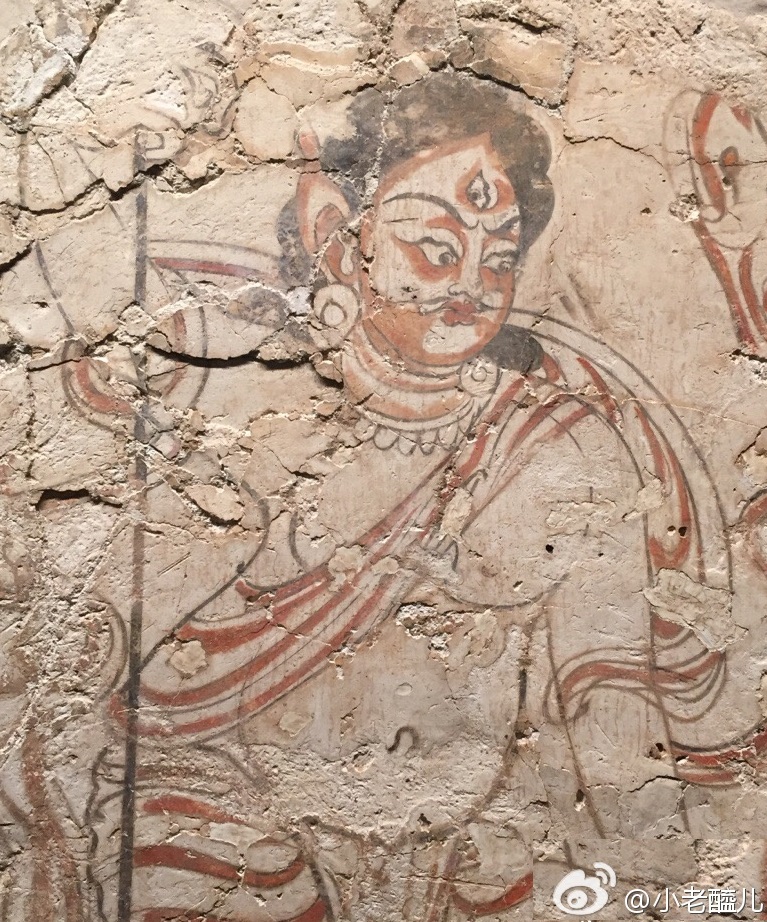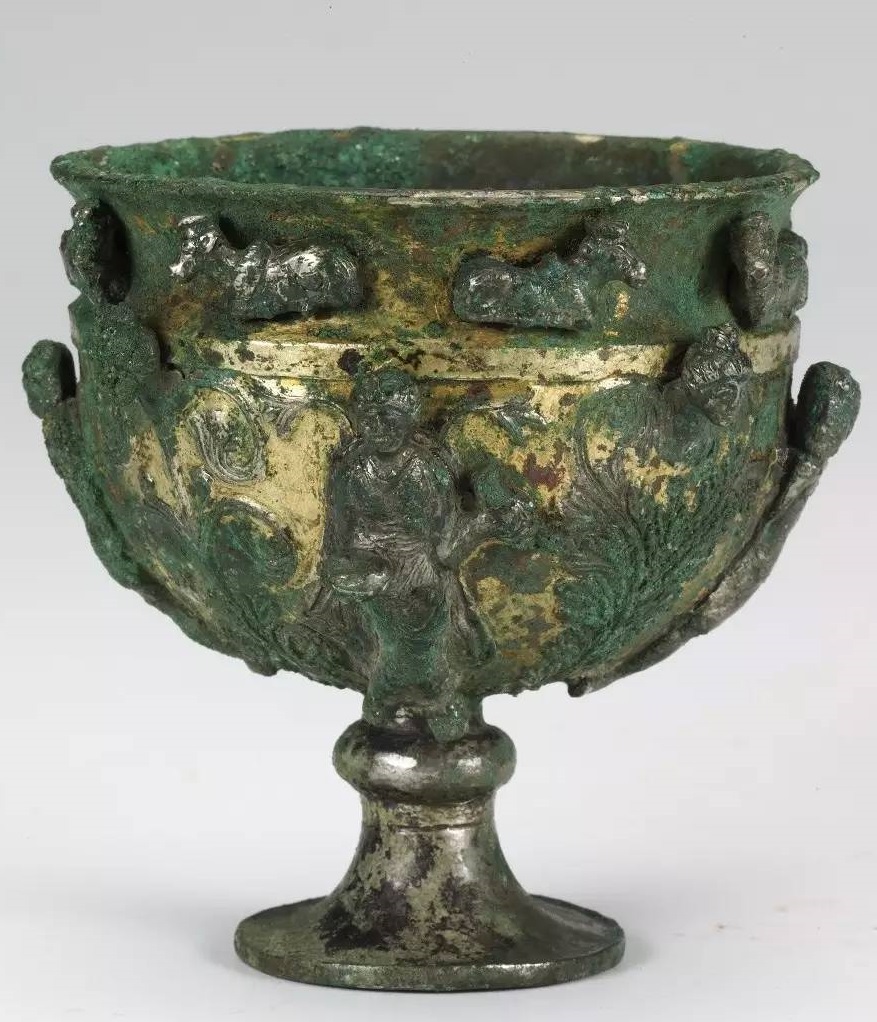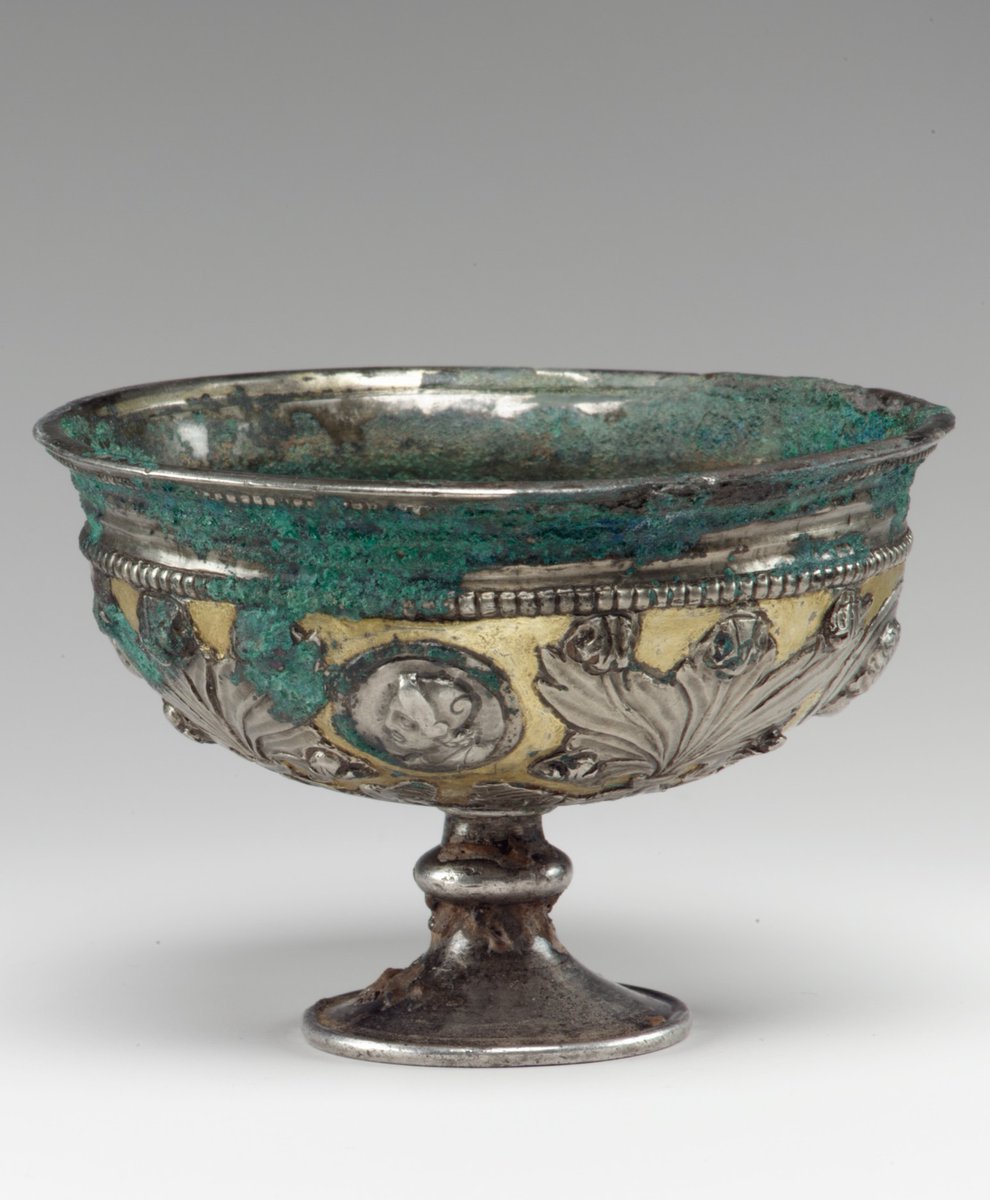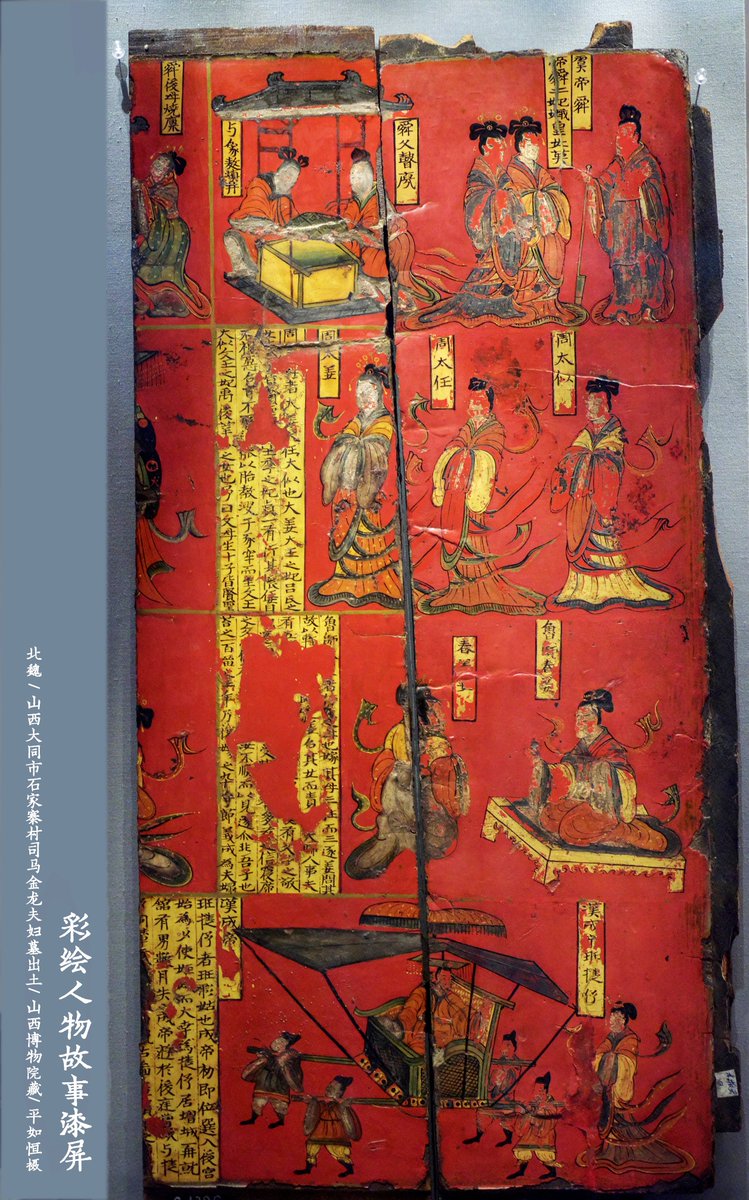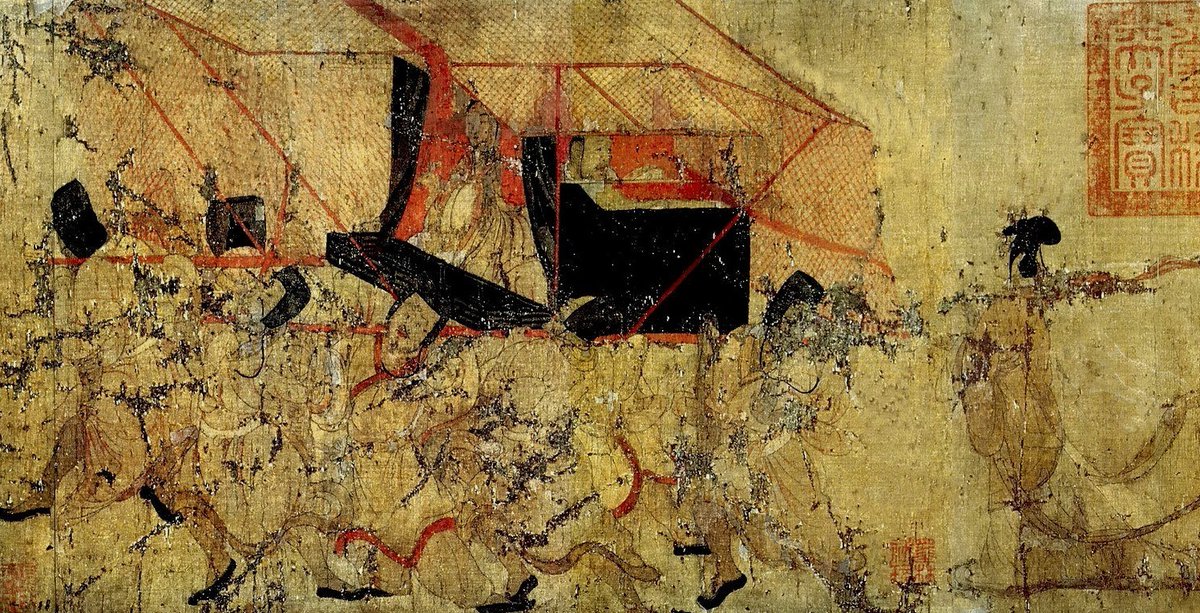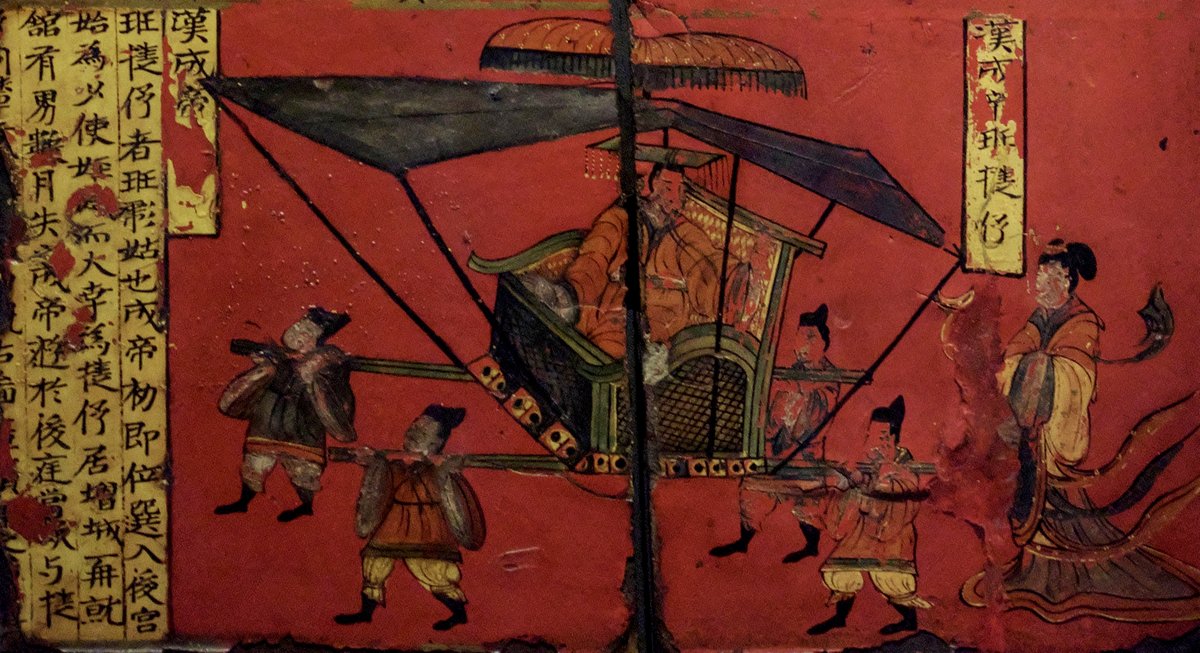My posts on Shimao attracted a bit attention. In fact, also on the east edge of the steppe, in 6th c AD, arose a city which can be truly called the first cosmopolitan metropolis in Chinese history. It& #39;s the capital city of Northern Wei, founded by proto-Mongolian Xianbei people.
Here& #39;re a couple of objects which help to pin down the close connections of the city (Pingcheng, today Datong) with Eurasian world. First, as a people originating on the steppe, the Xianbei nobility got their nomadic way of life painted in their tombs: yurts, tent carts, BBQ ...
After Xianbei rulers converted to Buddhism & made it a state religion, they imported Buddhist art from all across the Silk Road, not just Central Asia, but NW & South China. L: A head excavated at the site of a royal pagoda in the city. R: similar head found in Karasahr, Xinjiang
L: Buddha statue in one of the monumental cave chapels sponsored by Xianbei emperors on the city& #39;s outskirts (Yungang), dressed in Chinese-style robe & backed by a flaming halo derived from Zoroastrian worship of fire. R: similar statues in Central Asia were called "Buddha-Mazda"
L: Silver plate with a royal figure hunting boars, unearthed in the tomb of a high-ranking general, possibly a gift granted by the Northern Wei emperor. R: Plate from Afghanistan with an almost identical composition, made when Central Asia was under the rule of Sasanian Persia.
Left is a guardian figure inside a tomb at Pingcheng, with a third eye in the forehead & a trident (?) in his hand, which resembles a 3rd-c image of the god Shiva (R) uncovered in Central Asia, in both style & appearance.
L: Hellenistic-style gilded wine cup decorated with a woman holding a drinking vessel & acanthus leaves, discovered in the foundation of a building at Pingcheng. R: A stem cup from Afganistan or Central Asia. Both the products of Hellenistic art related to the cult of Dionysus.
Finally, an example of the presence of Chinese art in Pingcheng. A painted lacquer screen from tomb of a Chinese minister, whose father defected from South China. The image on it echoes that in The Admonition Scroll, a masterpiece of Chinese painting attributed to Gu Kaizhi (4C).
Some objects have been shown for the first time in this new exhibition:
https://www.ahm.cn/News/Details/tzgg?nid=10790
Images">https://www.ahm.cn/News/Deta... of others can be found in these two great catalogues:
https://yalebooks.co.uk/display.asp?k=9780300179675
https://yalebooks.co.uk/display.a... href=" https://www.metmuseum.org/art/metpublications/China_Dawn_of_a_Golden_Age_200_750_AD">https://www.metmuseum.org/art/metpu...
https://www.ahm.cn/News/Details/tzgg?nid=10790
Images">https://www.ahm.cn/News/Deta... of others can be found in these two great catalogues:
https://yalebooks.co.uk/display.asp?k=9780300179675

 Read on Twitter
Read on Twitter